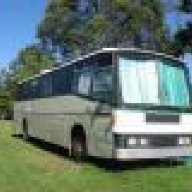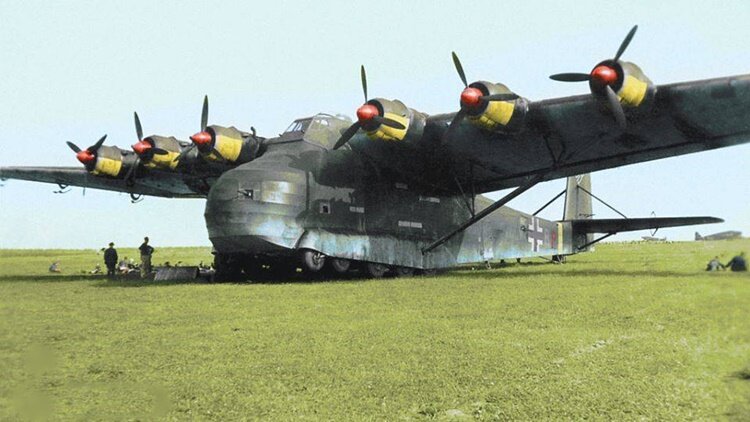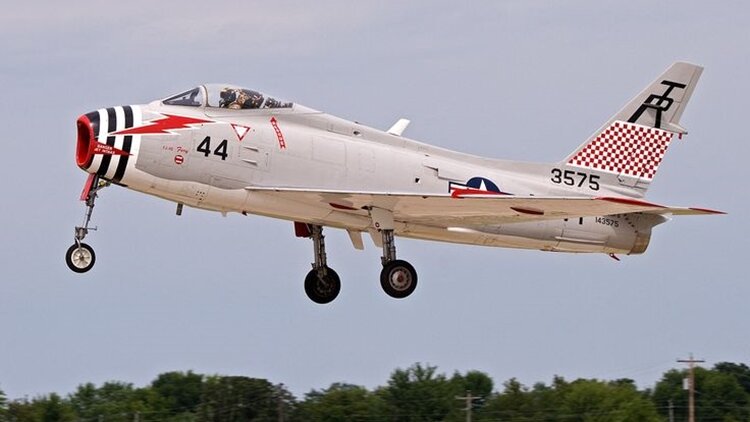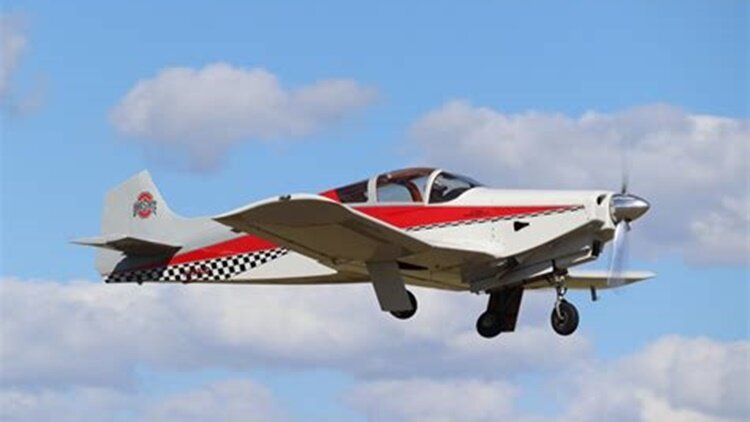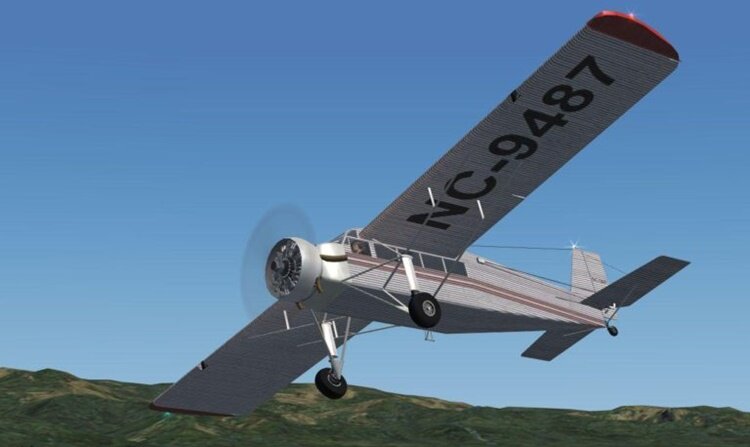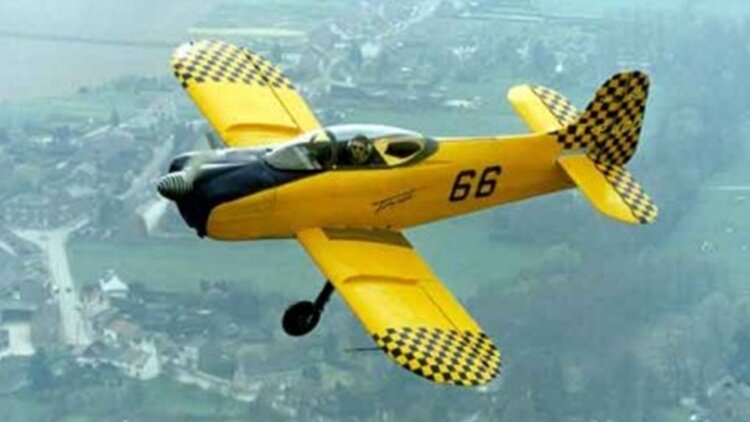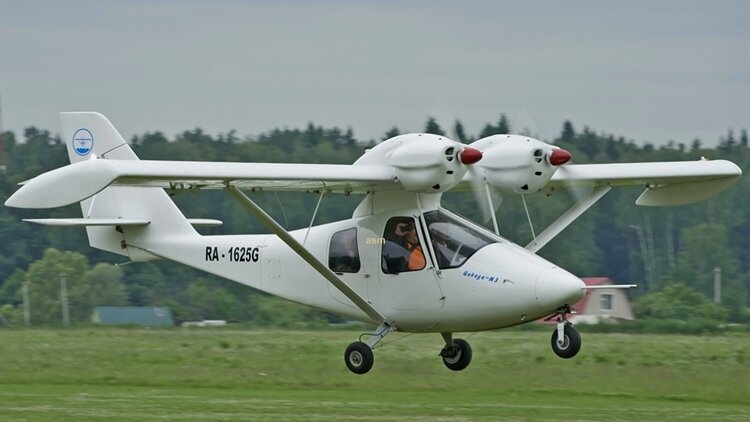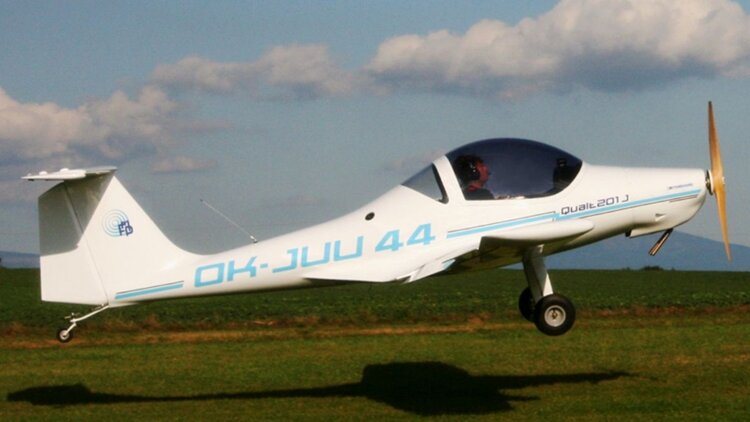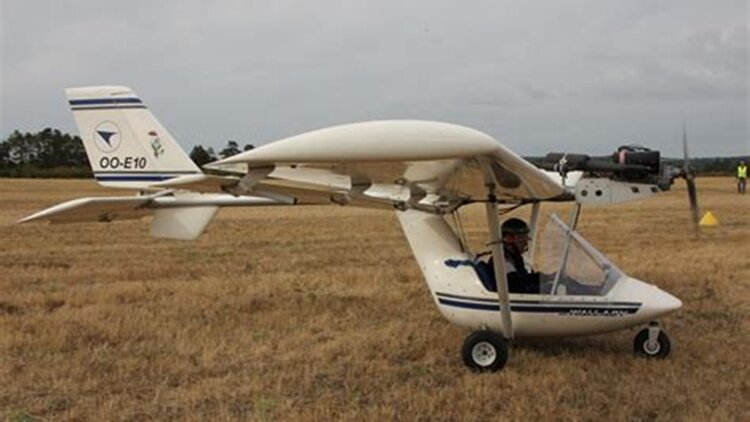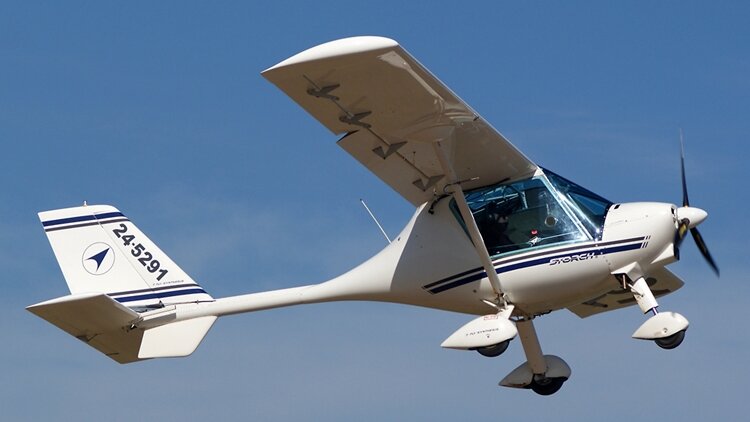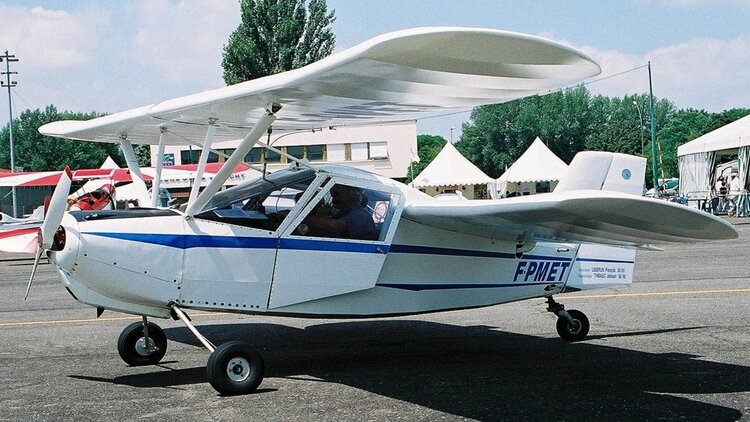-
Posts
7,717 -
Joined
-
Last visited
-
Days Won
67
red750's Achievements

Well-known member (3/3)
-
The Messerschmitt Me 323 Gigant ("Giant") was a German military transport aircraft of World War II. It was a powered variant of the Me 321 military glider and was the largest land-based transport aircraft to fly during the war. In total, 213 were made, with 15 being converted from the Me 321. The Me 323 was the result of a 1940 German requirement for a large assault glider in preparation for Operation Sea Lion, the projected invasion of Great Britain. The DFS 230 light glider had already proven its worth in the Battle of Fort Eben-Emael in Belgium (the first ever assault by gliderborne troops), and would later be used in the invasion of Crete in 1941. However, in order to mount an invasion across the English Channel, the Germans would need to be able to airlift vehicles and other heavy equipment as part of an initial assault wave. Although Operation Sea Lion was cancelled, the requirement for a heavy air transport capability remained, with the focus shifting to the forthcoming Operation Barbarossa, the invasion of the Soviet Union. Early in 1941, as a result of feedback from Transport Command pilots in Russia, the decision was taken to produce a motorized variant of the Me 321, to be designated Me 323. French Gnome et Rhône GR14N radial engines, rated at 1,180 PS (1,164 hp, 868 kW) for take-off as used in the Bloch MB.175 aircraft were chosen for use. This would reduce the burden on Germany's strained industry. Like the Me 321, the Me 323 had massive, semicantilever, high-mounted wings, which were braced from the fuselage out to the middle of the wing. To reduce weight and save aluminium, much of the wing was made of plywood and fabric, while the fuselage was of metal-tube construction with wooden spars and covered with doped fabric, with heavy bracing in the floor to support the payload. The "D" series had a crew of five - two pilots, two flight engineers, and a radio operator. Two gunners could also be carried. The flight engineers occupied two small cabins, one in each wing between the inboard and centre engines. The engineers were intended to monitor engine synchronisation and allow the pilot to fly without worrying about engine status, although the pilot could override the engineers' decisions on engine and propeller control. For more details of development, design, operational history and 18 variants, click here.
-
The North American FJ-4 Fury is a swept-wing carrier-capable fighter-bomber for the United States Navy and Marine Corps. The final development in a lineage that included the Air Force's F-86 Sabre, the FJ-4 shared its general layout and engine with the earlier FJ-3, but featured an entirely new wing design and was a vastly different design in its final embodiment. Compared to that of the FJ-3, the FJ-4's new wing was much thinner, with a six percent thickness-to-chord ratio, and featured skin panels milled from solid alloy plates. It also had an increased area, and tapered more sharply towards the tips. Slight camber behind the leading edge improved low speed characteristics. The main landing gear design had to be considerably modified to fold wheel and strut within the contours of the new wing. The track of the main wheels was increased and because they were closer to the center of gravity, there was less weight on the nosewheel. Wing folding was limited to the outer wing panels. The FJ-4 was intended as an all-weather interceptor, a role that required considerable range on internal fuel. The FJ-4 had 50% more fuel capacity than the FJ-3 and was lightened by omitting armor and reducing ammunition capacity. The new wing was "wet"; that is, it provided for integral fuel tankage. The fuselage was deepened to add more fuel, and had a distinctive "razorback" rear deck. A modified cockpit made the pilot more comfortable during the longer missions. The tail surfaces were also extensively modified and had a thinner profile. The overall changes resulted in an aircraft that had little in common with the earlier models, although a family resemblance was still present. The two prototypes had the same Wright J65-W-4 engine as the FJ-3, but production aircraft had the J65-W-16A of 7,700 lbf (34 kN) thrust. The first FJ-4 flew on 28 October 1954 and delivery began in February 1955. Of the original order for 221, the last 71 were modified in the FJ-4B fighter-bomber version. This had a stronger wing with six instead of four underwing stations and stronger landing gear. Additional aerodynamic brakes under the aft fuselage made landing safer by allowing pilots to use higher thrust settings, and were also useful for dive attacks. External load was doubled. The most important characteristic of the FJ-4B, however, was that it was capable of carrying a nuclear weapon on the inboard port station. It was equipped with the LABS or Low-Altitude Bombing System for the delivery of nuclear weapons. The Navy was eager to maintain a nuclear role in its rivalry with the Air Force, and it equipped 10 squadrons with the FJ-4B. It was also flown by three Marine squadrons. In April 1956 the Navy ordered 151 more FJ-4Bs, for a total of 152 FJ-4s and 222 FJ-4Bs produced, and 1,115 FJ aircraft of all variants delivered to the Navy and Marine Corps. The Navy ordered six FJ-4s to be converted to FJ-4F to test rocket engines, but only two were completed. These featured the North American Rocketdyne AR-1 engine, installed in a fairing above the tail pipe of the jet engine. It ran on hydrogen peroxide and JP-4 jet fuel, and provided an additional 5,000 lbf (22 kN) of thrust for short periods. The FJ-4F reached speeds of Mach 1.41 and altitude of 71,000 ft (21,600 m). With the 1962 adoption of the Tri-Service aircraft designation system, the FJ-4 became the F-1E and the FJ-4B the AF-1E. AF-1Es served with United States Naval Reserve units until the late 1960s. Number built 374 Variants XFJ-4 Two prototypes with a J65-W-4 engine and re-designed fuselage. YFJ-4 One FJ-4 used for development testing. FJ-4 Fury Single-seat fighter-bomber version, powered by a 7,700 lbf (34 kN) Wright J65-W-16A turbojet engine, 150 built. FJ-4B Fury Single-seat ground-attack close support version with six underwing pylons, 222 built. FJ-4F Fury Test and evaluation aircraft, fitted with an auxiliary rocket motor and supplementary fuel tank, two conversions from FJ-4. F-1E Fury Redesignation of the FJ-4. AF-1E Fury Redesignation of the FJ-4B. AF-1F (NA-295) Proposed light-attack version with TF30 engine, competitor to the A-7; not built.
-
The Jeffair Barracuda is a high-performance sporting monoplane that was developed in the United States in the 1970s and is marketed for homebuilding. Designed and built by Geoffrey Siers, the prototype won the prize for "Most Outstanding New Design" at the EAA Fly-in in 1976. It was a low-wing cantilever monoplane of wooden construction with retractable tricycle undercarriage and side-by-side seating for two. Around 150 sets of plans had sold by 1977. Geoffrey Siers was a former RAF pilot and engineer for Boeing in 1967. He set out to design an aircraft that was fast, aerobatic, two place, and had range to fly long cross-country flights. The aircraft was refined after a full size cockpit mockup was made. The lightweight construction of the plywood-covered wooden de Havilland Mosquito was the inspiration for the materials choice. The retractable landing gear came from a Piper PA-24 Comanche. The wings were a three-piece design. Test flights were performed in 1975. The aircraft takes off at 70 mph (113 km/h) and climbs at 2000 feet per minute (10.2 m/s). Full flap stalls were recorded as low as 54 mph (87 km/h).
-
https://www.msn.com/en-au/news/world/air-india-crash-probe-focuses-on-engine-fuel-control-switches-the-air-current-reports/ar-AA1IdVPY?ocid=winp2fptaskbarhover&cvid=3eb0f1b15e064ce19a15c4cd4535a20a&ei=36
-
The Metal Aircraft Flamingo was a monoplane produced in Cincinnati, Ohio by the Metal Aircraft Corporation in the 1930s. The Metal Aircraft Corporation purchased the design from the Halpin Development Co. and unveiled it at the 1929 National Air Races with Elinor Smith. Following an accident at Bowman Field in May 1928, the prototype Flamingo was redesigned with a different nose, windscreen, and tail. The interior was insulated with Balsam-Wool Blanket. The Flamingo was first flown from Lunken Airport on 8 April 1928 by Thomas E. Halpin. At one point, the aircraft carried an African-American porter in a red suit named Benny Smith. Following a teaser, marketing for the new airplane began in March 1929 and dealers were being solicited by the following month. One G-2-W, named El Rio Caroní, is best remembered for its role in the discovery of Angel Falls by Jimmy Angel in 1935. Although well known to the local indigenous population, the falls had been glimpsed only by European explorers until Jimmy Angel crash-landed while attempting to land above the falls on Auyán-tepui during gold exploration. The Metal Aircraft Corporation Flamingo that crashed above the falls was recovered by helicopter in the 1960s by the Venezuelan government and is on display at the entrance of the Ciudad Bolívar airport, in Venezuela. A replica was put in its place for visitors of the crash site. Other operators included the Mason & Dixon airline. Another operator of the aircraft was United States Airways which flew a route from Denver to Kansas City in the early 1930s. Stops were made Goodland, Salina, and Topeka, Kansas. Number built 21 Variants Halpin Flamingo six-passenger 410hp P&W G-1 five-passenger 450hp P&W G-2 six-passenger G-2-H six-passenger 525hp P&W G-2-W (Specifications below) eight-passenger 410hp P&W G-MT-6 five-passenger 410 or 525 P&W
-
The Jurca MJ-2 Tempete (French: "Tempest") is a single-seat sport aircraft designed in France in the mid 1950s and marketed for homebuilding. The Tempete is a low-wing cantilever monoplane of conventional configuration and utilising wooden construction throughout apart from the fabric covering of the flying surfaces. The undercarriage is of the fixed, tailwheel or tailskid type. The pilot's seat is enclosed by a bubble canopy; some aircraft have a second seat to carry a passenger of less than 55 kg (121 lb). The Tempête may be powered by a wide range of engines. At least 13 possibilities have been listed, each with its own suffix letter. These engines are all either Continental or Lycoming horizontally opposed types in the power range 48.5 - 134 kW (60-180 hp). The French and UK civil registers contain examples with seven different engines, the most popular choice being the 67 kW (90 hp) Continental C90 fitted to the Tempête MJ-2D model. The Jurca MJ-3 Dart was a one-off sport aircraft which was constructed in the United States in 1977. It was built by Denis Jacobs of Dayton, Ohio, marrying the fuselage of the single-seat Jurca Tempête with the wings of the two seat Jurca Sirocco. The Jurca Shadow was a variant with larger, swept back tail surfaces. The Tempête has been flown since 1957 by private owner and sporting pilots. There have been 37 on the French register, though 4 of these have been withdrawn as of September 2010. Two Tempêtes have UK Permits to Fly in 2010. In 2000 there were several flying in the USA. . Marcel Jurca died 19 October 2001 but plans are still available in 2009 from the designer's web site. Variants MJ-2 MJ-20 (never built) MJ-22 - Strengthened version with a 112 kW (150 hp) engine MJ-23 Orage ("Thunderstorm") - high-performance version with trapezoidal wings and intended for a 300-hp engine (never built) MJ-3 Dart - MJ-2 modified (1 built) MJ-4 Shadow - Version with enlarged, swept empennage (2 built)
-
There is a very similar amphibious version called the Gidroplan Che-22 Korvat, (Corvette), for which there is currently no Wikipedia page.
-
The Gidroplan Tsikada (Гидроплан Цикада or Hydroplane Cicada) is a light, twin engined utility aircraft, seating two or four in different variants, developed in Russia since about 2000. At different times and in different places the Tsikada or Sky Wind series has been marketed either under the company name, Gidroplan, or under its English translation, Hydroplane. The earliest Tsikada was shown in 2000 and was a high-wing monoplane, with twin engines mounted above and forward of the wing leading edge. This arrangement has been maintained through later versions. The original aircraft was a two seater with two doors, powered by 48 kW (64 hp) Rotax 582 engines. It was followed in 2007 by the Tsikada-M or Sky Wind 1, which had more powerful Jabiru engines and modifications to the fuselage and cabin, the undercarriage and the control systems. A four-seat prototype, the Tsikada-3M, preceded a four-seat, four-door, four-window production version known as the Tskiada-4 or Sky Wind-AT, which is 400 mm (15.7 in) longer than before. The earlier flaperons were replaced with separate flaps and ailerons. The prototype finished flight trials in July 2009 and the Tsikada-4 was first flown in August, followed by production the following year. The Tsikada has a metal wing, rectangular in plan and with small downturned tips. The engines are mounted over the wing as close together as the propeller discs allow. They, and the wing centre section are supported over the fuselage by a short cabane; a single faired strut on each side braces the wing to the lower fuselage, assisted by a jury strut. The composite skinned fuselage has one or two rows of side by side seats, each with a pair of side windows in the doors, behind a single piece windscreen. There is a baggage compartment with a maximum load of 40 kg (88 lb). Aft of the cabin the fuselage tapers, with an upswept underside, to a tall swept fin and balanced rudder. The rectangular tailplane, externally braced from above and carrying separate, unbalanced elevators with a cut-out for rudder movement, is mounted on the fin a little above the fuselage. The tricycle undercarriage has mainwheels on sprung cantilever legs and a steerable oleo sprung nose wheel. A chemical hopper with underwing spray bar and discharge chute from the central fuselage underside is an option. Three Tsikada-Ms were supplied to Cuba, the first for anti-mosquito spraying, between 2008 and 2010. In all, six two-seat Tsikadas were built. Variants Tsikada Original Rotax powered two-seater Tsikada-M (Sky Wind-1) Jabiru powered two-seater Tsikada-M3 Four seat Tsikada-4 development aircraft Tsikada-4 (Sky Wind-AT) (Specifications below) Four seat, Jabiru powered The photo below (and above) is the only one found, even searching a Russian aircraft photo website. The Wikipedia page says at least 6 units have been completed.
-
The Kalinin K-5 was an airliner produced in the Soviet Union in the 1930s, built in larger quantities than any other Soviet airliner of its time, with some 260 aircraft constructed. It was a conventional, high-wing, strut-braced monoplane with a fully enclosed cabin and cockpit, and followed the general pattern developed by Kalinin in his earlier designs, though on a larger scale. Kalinin had first considered an airliner for 10-12 passengers as early as 1926, but it was not until Ukrvozdukhput expressed interest in such a machine late the following year that work on the design began in earnest. The prototype was ready by mid-autumn 1929, and first flew on October 18 with Mikhail Artemevich Snegirev at the controls. Safety trials for the State Commission commenced on 30 May 1930, and were passed successfully. Ongoing problems with the aircraft's Gnome et Rhône-built Bristol Jupiter engine resulted in the second prototype being powered by a Pratt & Whitney Hornet instead. This machine undertook further testing and a number of promotional flights before series production of the K-5 commenced. Early production examples were used on trial services between Kharkiv and Moscow, Mineralnye Vody, and Baku. Problems with the Bessonov M-15 engines became quickly apparent, with frequent failures and operational lifespans measured in only dozens of hours. K-5 operations were suspended by the Inspectorate of Civil Aviation until the issues were resolved. Kalinin turned to the Shvetsov M-22 as an alternative powerplant. While reliability increased, this engine installation also created more drag than the M-15 had, and performance decreased accordingly. State Acceptance trials carried out in May–June 1932 confirmed the reliability of the engine with 550 takeoffs and landings and 2,000 steep turns, but found that the payload capacity was now unacceptably low. By this time, however, the M-15 had become reliable enough for restrictions to be lifted and K-5 production resumed, and eventually about 100 K-5s were fitted with this engine. The reliability of the revised M-15 design was vindicated by a gruelling flight through the Caucasus on 25 June 1933. Eventually, the Mikulin M-17F provided the definitive powerplant for the K-5, offering an increase in power and performance over the M-15, but decreasing the aircraft's payload and range due to its greater weight. The new engine also required strengthening of the wing design; the first K-5 fitted with this engine suffered structural damage during flight tests due to the increase in engine power. The K-5 was widely used by Aeroflot, displacing German-built Junkers F 13s and Dornier Komets in regular service. The first scheduled route flown by K-5s was Moscow-Kharkov, followed by services between Moscow and Sverdlovsk, Tashkent, and Arkhangelsk. They remained in service until 1940, becoming the backbone of Aeroflot's domestic operations. The K-5 was also used by the Soviet Air Force as a transport aircraft, operating in this capacity until 1943.
-
The Isaacs Spitfire is a single seat homebuilt sporting aircraft design created by John O. Isaacs, a former Supermarine employee and retired schoolmaster and designer of the Isaacs Fury, as a 6/10th scale replica of a Supermarine Spitfire. Its first flight was on 5 May 1975. As per the original Spitfire, the Isaacs Spitfire was a cantilever low-wing monoplane of semi-elliptical planform. The twin spar wing was built in one piece, mainly of spruce with birch plywood skin. The fuselage was of identical construction. The landing gear is fixed and included a tailwheel. Plans are available for sale to home constructors.
-
The FMP Qualt 201 is a Czech ultralight and light-sport aircraft, designed and produced by FMP s.r.o. of Prague. The aircraft is supplied as a complete ready-to-fly-aircraft. The Qualt 201 was derived from the earlier FMP Qualt 200, which it replaced in production. The 201 was designed to comply with the Fédération Aéronautique Internationale microlight rules and US light-sport aircraft rules. It features a cantilever low-wing, a two-seats-in-side-by-side configuration enclosed open cockpit under a bubble canopy, fixed conventional landing gear, a T-tail and a single engine in tractor configuration. The aircraft is made from composites. Its 9.2 m (30.2 ft) span wing has an area of 10.5 sq m (113 sq ft) and mounts split-style flaps. Standard engines available are the 64 hp (48 kW) Rotax 582 two-stroke, the 80 hp (60 kW) Rotax 912UL, the 100 hp (75 kW) Rotax 912ULS and the 85 hp (63 kW) Jabiru 2200 four-stroke powerplants.
-
The Fly Synthesis Wallaby is an Italian two-seat, microlight monoplane manufactured by Fly Synthesis. The Wallaby is a high-wing monoplane with a high tail boom and with a 37 kW (50 hp) Rotax 503 piston engine fitted in front of the wing. Below the wing is an enclosed cabin with two seats and a fixed tricycle landing gear. The aircraft is available built or as a kit.[1] A Rotax 582 powered variant, the Wallaby R582 is also available. The design uses the wing from the Storch CL mated to a new high tailboom fuselage design, with the design goal of producing an economical aircraft.[3] The aircraft is sold as the Lafayette Wallaby in the United States. Reviewer Marino Boric described the design in a 2015 review as "very pleasant to fly". Variants Wallaby R503 Rotax 503 powered Wallaby R582 Rotax 582 powered
-
The Flaeming Air FA 04 Peregrine is a German ultralight and light-sport aircraft, designed and produced by Flaeming Air of Zellendorf, Brandenburg. The aircraft is supplied as a complete ready-to-fly-aircraft. The aircraft was designed to comply with the Fédération Aéronautique Internationale microlight rules and US light-sport aircraft rules, with different models for each category. It features a cantilever low-wing, a two-seats-in-side-by-side configuration enclosed cockpit under a bubble canopy, fixed tricycle landing gear, or optionally conventional landing gear and a single engine in tractor configuration. The aircraft is made from composites, with its fuselage, wing spars, flaps and rudder made from carbon fibre. Its 10.05 m (33.0 ft) span wing has an area of 9.27 sq m (99.8 sq ft). The standard engines available are the 100 hp (75 kW) Rotax 912ULS, 120 hp (89 kW) Jabiru 3300 and the 100 hp (75 kW) Continental O-200 four-stroke powerplants. The FA 04 can be used for aero-towing gliders up to 750 kg (1,653 lb) gross weight. Variants FA 01 Smaragd (Emerald) Initial model for the European FAI microlight class, with a gross weight of 472.5 kg (1,042 lb). FA 02 Kit aircraft with a gross weight of 650 kg (1,433 lb). FA 04 Peregrine Light-sport model for the US market, with a gross weight of 600 kg (1,323 lb). FA 04 SL Super-light model with an empty weight of 270 kg (595 lb), including a ballistic parachute.
-
The Fly Synthesis Storch (English: Stork) is an Italian ultralight aircraft, designed and today produced by Gryphen Aircraft Industries (ex- Fly Synthesis), introduced in 1990. The aircraft is supplied as a complete ready-to-fly-aircraft or as a kit for amateur construction. The Storch was designed to comply with the Fédération Aéronautique Internationale microlight rules. It features a strut-braced high-wing, a two-seats-in-side-by-side configuration enclosed cockpit, fixed tricycle landing gear and a single engine in tractor configuration. The aircraft is of mixed construction, with the fuselage made from composites and the tail boom an aluminum tube. The HS model has a 8.70 m (28.5 ft) span wing with an area of 11.8 sq m (127 sq ft) and flaperons. Standard engines available are the 80 hp (60 kW) Rotax 912UL and the 85 hp (63 kW) Jabiru 2200 four-stroke powerplants. All controls are operated by teleflex cables, except the ailerons, which are operated by push-pull tubes. In 2024 a new version of the Storch was released, with a full composite fuselage, enhancing the aircraft performance significantly. Specifications listed below. Variants Storch CL Model with a longer 10.15 sq m (33.3 ft) span wing with an area of 13.6 sq m (146 sq ft) and a gross weight of 450 kg (992.1 lb), sold as the Lafayette Stork Classic in the USA. Storch HS Model with a shorter 8.70 m (28.5 ft) span wing with an area of 11.8 sq m (127 sq ft) and Junkers-style flaperons. Gross weight of 472.5 kg (1,041.7 lb) It is sold as the Lafayette Stork Super Sport in the USA. Storch S Model with separate flaps and ailerons, in place of flaperons and a gross weight of 500 kg (1,102.3 lb).
-
The Lederlin 380L (marketed in North America as the Ladybug) is an unconventional light aircraft developed in France in the 1960s, and marketed for homebuilding. François Lederlin developed the 380L from the Mignet HM.380 "Flying Flea", and eventually created a new aircraft sharing only its choice of wing profile and general configuration. Like the Pou-du-Ciel, the 380L is a tandem wing design, with the forward wing mounted on a set of cabane struts forward of the cockpit, and designed to pivot in flight, to vary its angle of incidence. Otherwise, it is unlike the original Mignet HM.14, having side-by-side seating for two in a fully enclosed cockpit, and a neatly cowled engine. The fuselage is of steel tube construction, metal-skinned at the front and fabric-covered to the rear, and the wings have fabric-covered wooden structure. The tailwheel undercarriage is fixed.



